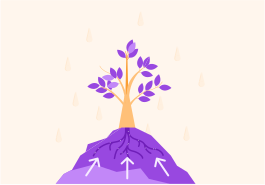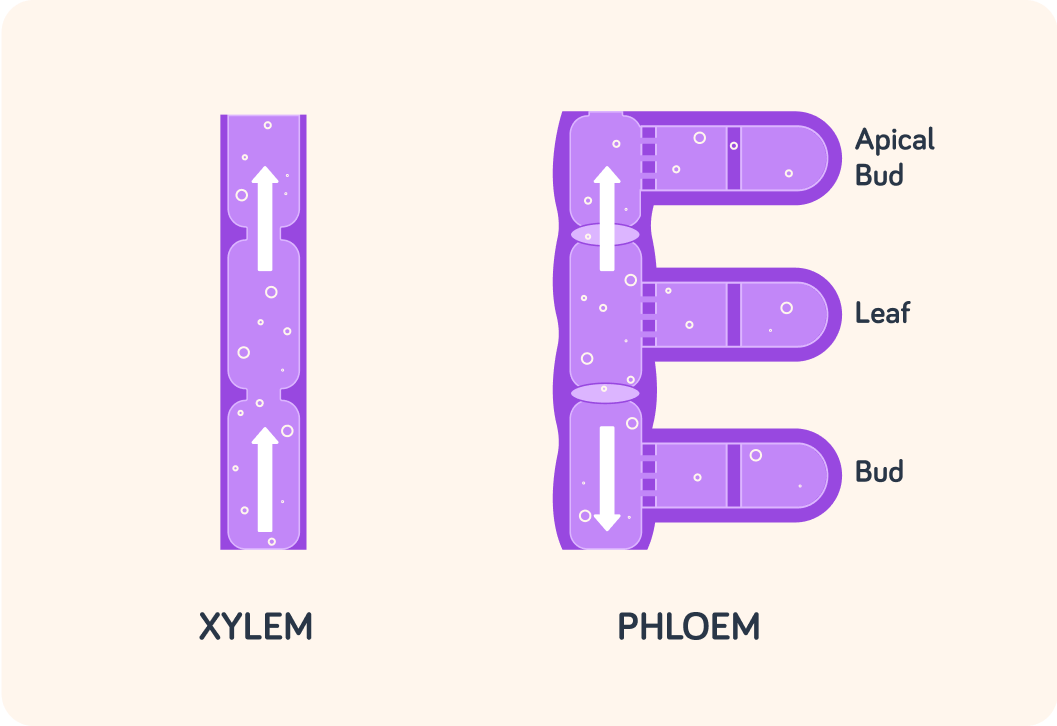YOU ARE LEARNING:
Translocation

Translocation
Translocation describes the process by phloem where sucrose is transported around the plant.
Name the sugar that the plant makes during photosynthesis.

The glucose made during photosynthesis can be converted into several other substances required by the plant. Select the substances that can be made from glucose.

You can select multiple answers
Glucose is very important to plants. They use it to make cellulose, starch, amino acids, fats and sucrose. A plant makes sucrose from glucose because this is the best way to transfer energy around the plant.
Plants have two transport vessels. The xylem transports water and mineral ions up the plant. The other vessel is used to transport dissolved food molecules such as the sucrose. Name the other vessel.

The diagram shows the direction of travel in the xylem and phloem. Water and mineral ions only travel up the xylem. Dissolved food molecules travel ...
A) up the phloem. B) up and down the phloem.


What would you suggest be the best definition for translocation?

Translocation is the movement of dissolved food substances up and down the phloem. Substances such as glucose and amino acids, may be required all around the plant. They may be needed at the roots, the leaves or at buds.
Why may plants require amino acids all around the plant?

Why is glucose required all around the plant?

Translocation occurs up and down the phloem. Roots at the bottom of the plant and tips at the very top need amino acids to grow. Every cell all over the plant needs to respire. When a plant respires, it releases energy needed for growth and reproduction.
